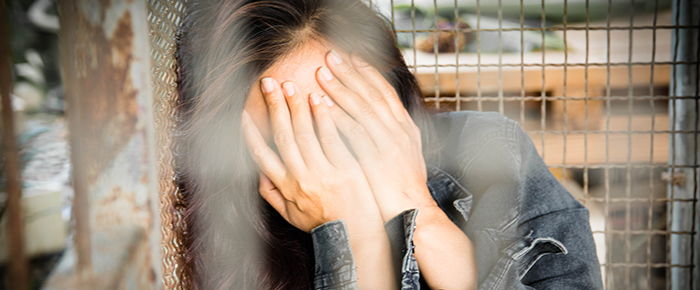
Since the Presidential Proclamation of 2010, we have annually observed January as National Slavery and Human Trafficking Prevention Month. We also recognize January 11 as National Human Trafficking Awareness Day. Despite all the media attention and many worthy organizations fighting this problem, there are still over 40 million slaves in the world today. Women and girls account for 71 percent of those victims.1
The words “human trafficking” and “Native Americans” cause a myriad of pictures to flash in our mind’s eye, whether it be from various forms of media or from pictures in our schoolbooks when we were children. Yet, how do these two diverse sets of pictures merge and why is there a focus on Native Americans versus other ethnic groups found throughout America? The more I research this question, the more I understand how the tentacles of the cancer of human trafficking wrap around Native Americans more easily than other ethnicities in the U.S.
Before the colonization of the U.S., Native Americans held women in high regard as life bearers and the future of their people. They were the political, spiritual and ceremonial leaders and violence against women was forbidden. The concepts of property and ownership did not exist in the language or culture and most indigenous languages have no word for rape and prostitution.2
However, Europeans began to colonize in the late 1800s and their views of Native women were vastly different from those of Native Americans. Many European men thought that Native women were oversexed and without morality. Europeans viewed these women as exotic and sexually interesting, but thought they lacked “appropriate” male control, so they viewed the women as a threat to civilized society. Native women became targets for men’s sexual “entertainment” and there were no legal consequences for sexual harassment, rape or sexual exploitation. The Native women were only objects to be sold or traded for alcohol or other goods.3
As the westward expansion occurred in America, Native Americans were forced onto reservations where they became a nation within a nation with their own special challenges. They retained their own government and were supposed to keep their land through a system of land “allotment.” However, the federal government did not keep all the promises made to them.
A campaign began in the 1800s to try to assimilate American Indian children into non-Native culture. Many Native children were taken from their homes and forced to live in government-run boarding schools where they were punished for practicing their religion or speaking their own language. From the 1940s through the 1960s, about one-third of Native American children were placed in foster homes: the majority of which were non-Indian. These children were often targets of physical and sexual abuse.4
Today, violence against women and children has become an epidemic. According to Huffington Post, Native women are 3.5 times more likely to be sexually assaulted or raped compared to women of other races. Twenty-two percent of Native children suffer from post-traumatic stress disorder (PTSD) that is equal to PTSD found in Iraq and Afghanistan veterans.5 The Department of Justice has recognized this epidemic and in October 2017, awarded more than $130 million to “Improve Public Safety, Address Violence against Women and Victim Services for American Indian and Alaskan Native People.”6
These factors, in addition to others such as alcoholism and drug abuse, may contribute to Native Americans and Native Alaskans being trafficked. Analysis from Hennepin County Correction's prostitution arrest data in 2007 found that 24 percent of the prostitution arrests in Hennepin County, Minnesota involved Native American women. This is 12 times their representation in the county’s population. In Anchorage, Alaska, about one-third of the women arrested for prostitution in 2009 and 2010 were Alaskan Natives even though they make up only 16 percent of the state’s population.7
As heartbreaking as all of this information is, the question remains, “What can we do about it?” Bank Secrecy Act/anti-money laundering (BSA/AML) officers of financial institutions across the U.S. play a vital role in coordinating with law enforcement to stop human trafficking. Trafficking is the third largest criminal activity globally and generates $150 billion a year in revenue. This plague affects every community in every state, so no matter where you live, trafficking monies could be flowing through your financial institution.
Continuously educate yourself about the red flags of human trafficking, but remember that no single red flag is a clear indicator of human trafficking. Numerous resources give specifics on things to look for when conducting customer due diligence/enhanced due diligence reviews. For instance, on Human Trafficking Awareness Day I learned three new indicators of human trafficking:
- According to law enforcement, when customers state that wired funds are for a “living fee,” that is often a sign of human trafficking.
- According to a BSA officer, student visas can be a red flag for human trafficking, as students from other countries can be easily trafficked.
- According to a Verafin webinar titled “Best Practices for Human Trafficking Investigations,” which highlighted the Polaris report, “The Typology of Modern Slavery: Defining Sex and Labor Trafficking in the United States,”8 there are other websites backpage.com uses to facilitate human trafficking activity. Some of these websites are mobileposting.com, jeboom.com and easypost123.com.9
Human trafficking is too large of a problem to solve with a few people or organizations. It takes an army committed to learning, sharing, working and fighting to stop this scourge on our society. The life you save could be that of your child or grandchild!
- Mark Tutton, “40 Million Slaves in the World, Finds New Report,” CNN, September 20, 2017, http://www.cnn.com/2017/09/19/world/global-slavery-estimates-ilo/index.html
- Polaris, “Coming Together to Address Human Trafficking in Native Communities,” January 4, 2017, http://www.tribal-institute.org/2016/E2PP.pdf
- Ibid.
- Cecily Hilleary, “Sex Traffickers Targeting Native American Women,” Voa News, November 18, 2015, https://www.voanews.com/a/sex-traffickers-targeting-native-american-women/3063457.html
- Julian Brave NoiseCat, “13 Issues Facing Native People Beyond Mascots and Casinos,” Huffington Post, August 31, 2015, https://www.huffingtonpost.com/entry/13-native-american-issues_us_55b7d801e4b0074ba5a6869c
- DOJ, “Justice Department Awards More than $130 Million to Improve Public Safety, Address Violence Against Women and Victim Services for American Indian and Alaska Native People, October 3, 2017, https://www.justice.gov/opa/pr/justice-department-awards-more-130-million-improve-public-safety-address-violence-against
- Alexandra (Sandi) Pierce, PHD, “American Indian Adolescent Girls: Vulnerability to Sex Trafficking, Intervention Strategies,” https://humantraffickinghotline.org/sites/default/files/AI%20Girls%20and%20Vulnerability%20to%20Sex%20Trafficking%20-%20Pierce.pdf
- Polaris, “The Typology of Modern Slavery: Defining Sex and Labor Trafficking in the U.S., https://polarisproject.org/typology-report
- Verafin’s Resource Center allows anyone to view its archived webinars at no charge and has several resources specifically on human trafficking: https://verafin.com/content-type/webinar/?s=










